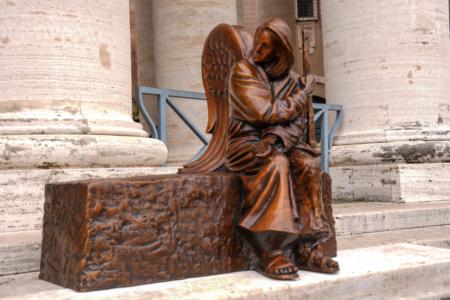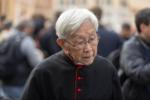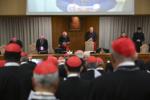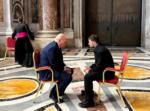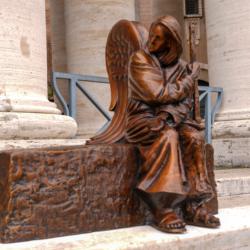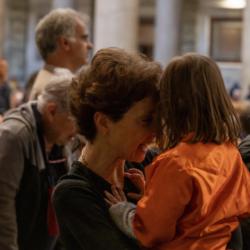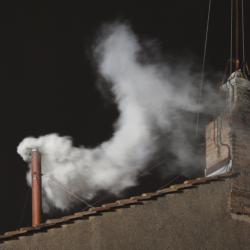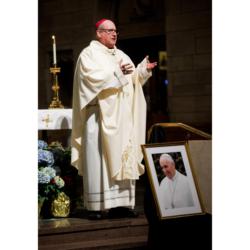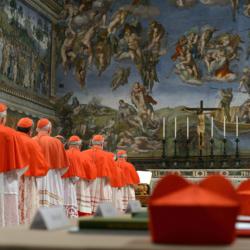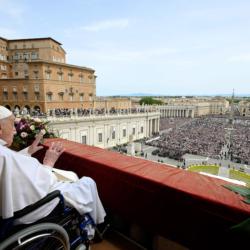Better ways to care for the dying
Surely I shall never forget my first encounter with Mother Teresa of Calcutta. It was in November of 1970 and I was teaching at Catholic University. We had received notice that the university was awarding an honorary doctorate to a missionary nun in the Caldwell Auditorium. Realizing that few people would bother to attend, I decided "to make the sacrifice" in solidarity with a fellow religious. Only a handful of people showed up. Cardinal Patrick O'Boyle presided and Eileen Egan, an early follower of Dorothy Day who was at Catholic Relief Services (CRS) was charged with introducing the nun to the assembly. None of us had ever heard of Mother Teresa of Calcutta.
Eileen Egan described her first meeting with Mother Teresa in the streets of the slums of Calcutta. She described seeing a wheelbarrow containing the filthy body of a dying man covered with open sores filled with maggots. She said that it seemed that the wheelbarrow moved on its own. Then she spied the diminutive nun pushing it. She learned that Mother and her sisters, for twenty years had been gathering the dying people abandoned in the streets, carrying them to an old former Hindu temple and taking care of them so that they could die surrounded by love.
I remember looking around the auditorium and seeing many people crying as Eileen Egan described Mother Teresa's ministry to the dying. Soon the world was to learn about this amazing religious woman thanks to English journalist Malcolm Muggeridge's film and book, both called "Something Beautiful for God."
Mother Teresa is part of a long tradition of caring for the dying in our Church. In our own country we have the moving testimony of Rose Hawthorne, the daughter of Nathaniel Hawthorne from Massachusetts. Rose founded a religious order in the early 1900s to care for people dying of cancer. Here in the archdiocese, the Little Sisters of the Poor and the Carmelites Sisters for the Aged and Infirm are excellent current examples of the Church's tradition of loving care for the dying.
In our community the hospice movement is an extraordinary service to those at the end stages of life and their families. Hospice was founded by a nurse in England, Cicely Saunders. She had worked as a volunteer at St. Luke's Home for the Dying Poor. She founded hospice to deal with the "total pain" of those who are dying. This includes not just physical suffering but the psychological and spiritual suffering people experience at the end of life. In 1971, Florence Wald left her position as dean of the Yale School of Nursing, to bring hospice to the United States.
Hospice was one of the first programs to use modern pain management techniques to care compassionately for the dying. Today there are almost 5,000 hospice programs in the United States with an organized team approach to professional care giving and 1.4 million people are enrolled in hospice care each year.
Hospice is not a place, but a concept of care. Eighty percent of hospice care is provided in the patient's home, a family member's home or a nursing home. Hospice cared for my Dad when he was dying. In my family, we are all grateful for the excellent care that hospice provided. The nurses and hospice workers truly ministered to the whole family.
Taking care of people at the end of their lives, giving palliative care to address the physical pain and bringing reassurance to people dealing with fear and frustration is truly doing something beautiful for God. How many times do we pray to our Blessed Mother, "Pray for us sinners now and at the hour of our death." At the hour of our death, we need prayers and support. In popular devotion, Saint Joseph is called the patron of a happy death because by tradition it is said that he died surrounded by the loving embrace of Jesus and Mary.
We all want what is best for our loved ones, especially at the end of life's journey. It is my hope that this series of reflections, to be posted on my blog and published in The Pilot, will demonstrate that physician assisted suicide is an assault on human dignity. It must never be seen as a viable alternative to hospice and palliative care that address not only people's pain but also their fears and frustration.
The Archdiocese of Boston has developed an educational website on the Church's teachings on end of life issues, www.SuicideIsAlwaysATragedy.org. The archdiocese is also part of a large coalition of groups from other faiths, from the medical community, and from disabilities rights groups that are advocating a No vote on Question 2. The coalition's website is www.StopAssistedSuicide.org.
